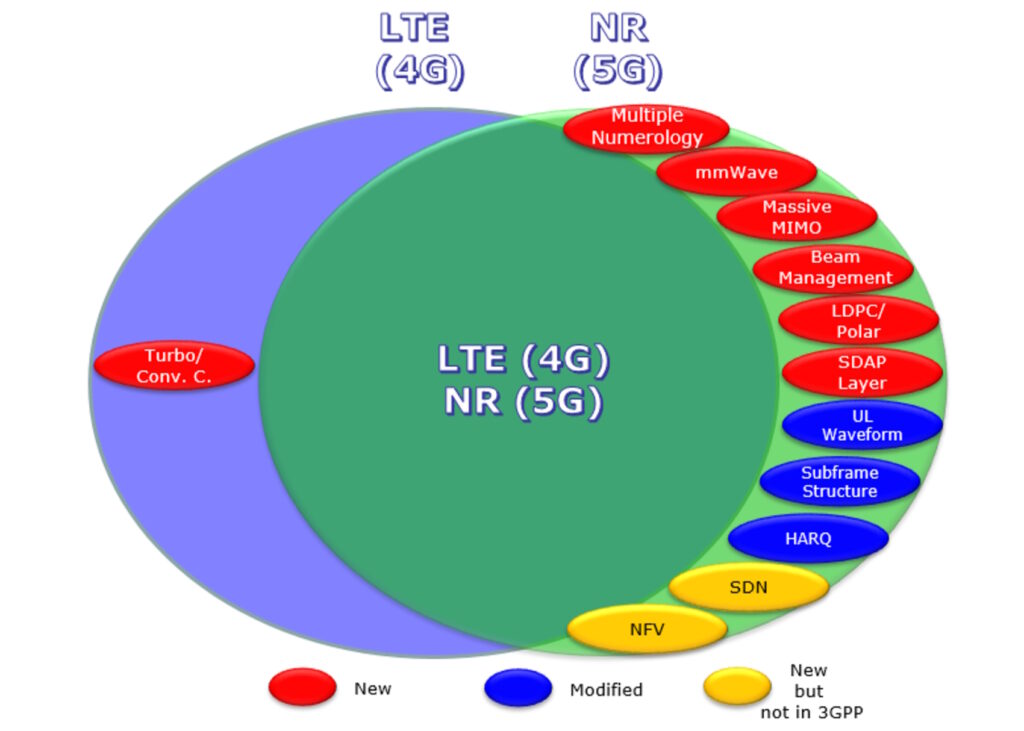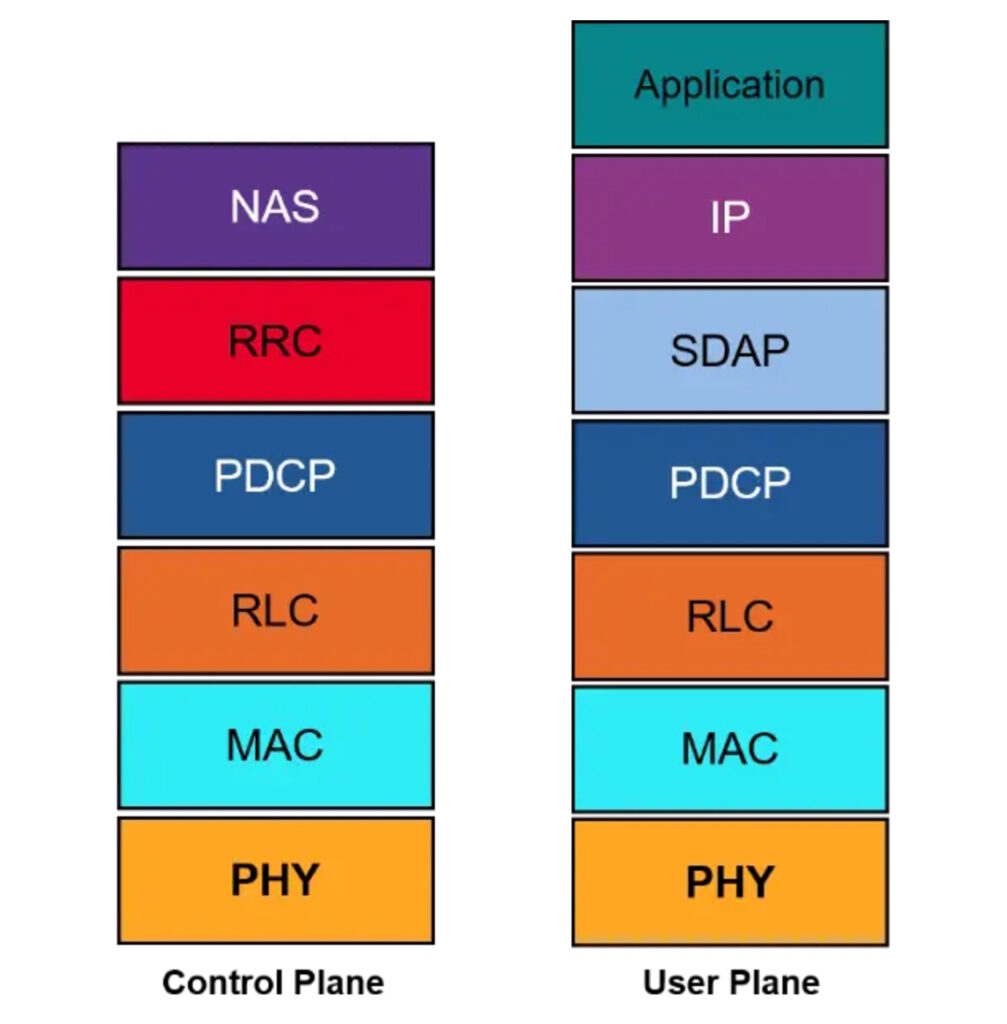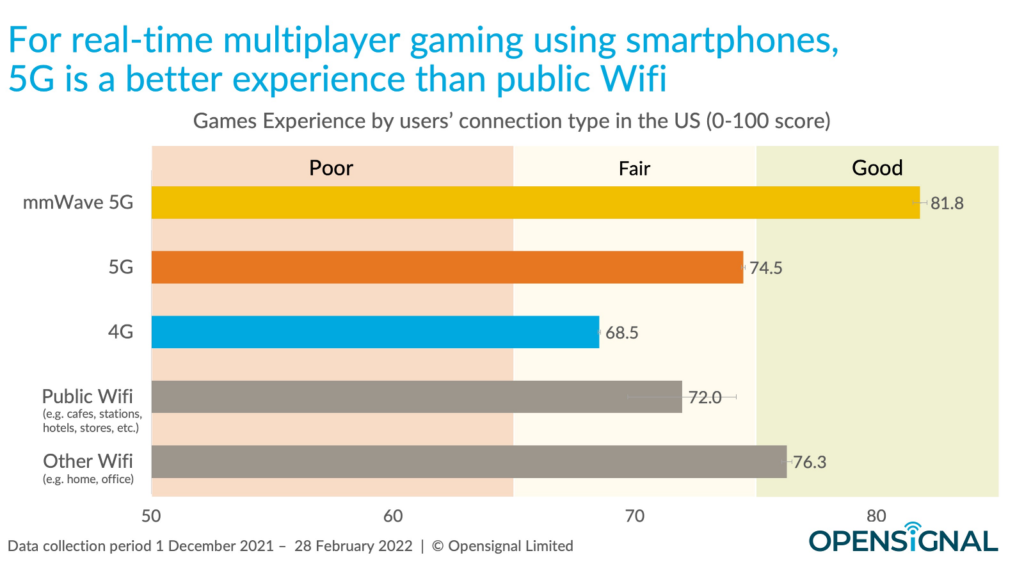The architecture of protocols in a 5G network, known as the 5G protocol stack, consists of two elements: the control plane (CP) and the user plane (UP). It manages functions like data transmission, error correction, and resource allocation.
Compared to the 4G protocol stack, the 5G protocol stack is more complex due to advanced features like multiple numerology, millimeter wave frequencies, network slicing, massive MIMO, and beamforming.
- Multiple numerology allows for various subcarrier spacing configurations to meet the needs of different use cases in 5G networks.
- Utilizing millimeter wave frequencies requires more sophisticated signal processing techniques in 5G.
- New features like network slicing and massive MIMO add complexity to the protocol stack.
In both the control plane and user plane of a 5G network stack, common layers include:
- Physical Layer (PHY) for data conversion and control information transmission.
- Medium Access Control (MAC) layer for resource allocation and traffic prioritization.
- Radio Link Control (RLC) layer for error-free data transmission.
- Packet Data Convergence Protocol (PDCP) layer for IP packet compression and encryption.
Additional control plane layers
The Radio Resource Control (RRC) layer manages radio connections between devices and base stations.
The non-Access Stratum (NAS) layer handles non-radio access-related functions.
Additional user plane layers
Service Data Adaptation Protocol (SDAP) layer ensures Quality of Service (QoS) management for different types of traffic.
The Internet Protocol (IP) layer in 5G supports optimized data transmission for high speeds and low latencies.
The application layer supports a wider range of applications and use cases in 5G.
Summary
The structure of the 5G protocol stack enables faster speeds and lower latencies compared to 4G, supporting applications like eMBB, URLLC, and mMTC with enhanced QoS.
References
5G NR Protocol Structure Changes – An Overview, Keysight
5G System Overview, 3GPP
5G Toolbox and the 5G NR Protocol Layers, MathWorks
Describe the 5G NR (New Radio) protocol stack and the different layers involved in 5G communication, TELCOMA Global
Key Components of the 4G and 5G Protocol Stack, Apeksha Telecom
The Role of the 5G NR Protocol Stack, 5G Descomplicado
Understanding the difference between 5G Networks and 4G LTE, Cavli
What Is 5G vs 4G?, Cisco
EEWorld Online related content
How does the PCIe protocol stack work?
Power consumption for IoT modules: Protocols matter
Get the missing telecom network data
How does 5G’s O-RAN E2 interface work?
How timing propagates in a 5G network





